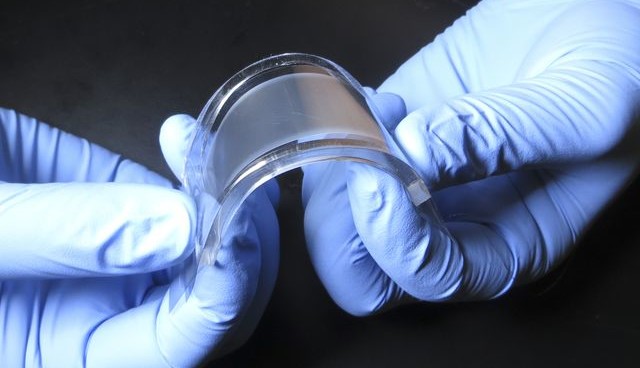Flexible cooling for mobile electronics
on

Engineers and researchers from the University of California (Henry Samuell School of Engineering and Applied Science) and SRI International (an non-profit research and development institute) have developed a thin and flexible component that can be used to cool smartphones and laptops so that overheating can be prevented.
Because the component is thin and flexible, it can also be used for wearable electronics, robots and such like. The component is based on the electrocaloric effect — a phenomenon where the temperature of a material changes when it is subjected to an electric field. The research has been published in Science.
The method discovered by the researchers is very efficient with energy. A very thin polymer film transports heat from the source (typically a battery or a processor) to a 'heat sink' by alternating the contact between them by switching the voltage on and off. Because the polymer film is very flexible, the system can be used in devices with complex shapes or moving surfaces.
An important application is the cooling of mobile and 'wearable' electronics. As most tablet and smartphone users will have experienced, these devices have a tendency to become warm during use, particularly during 'energy intensive' applications such as the streaming of video. Although they have internal cooling structures to take away the heat from the processor and battery, they nevertheless can become overheated (and switch themselves off). Over time the components can also become damaged from being too hot.
The UCLA/SRI system offers several advantages over other cooling systems that are based on the thermo-electric effect. The latter make use of expensive ceramic materials while the efficiency isn't terribly great.
Other potential applications are the treatment of wounds and the reduction of thermal noise in thermal imaging cameras and night-vision equipment.


Discussion (0 comments)